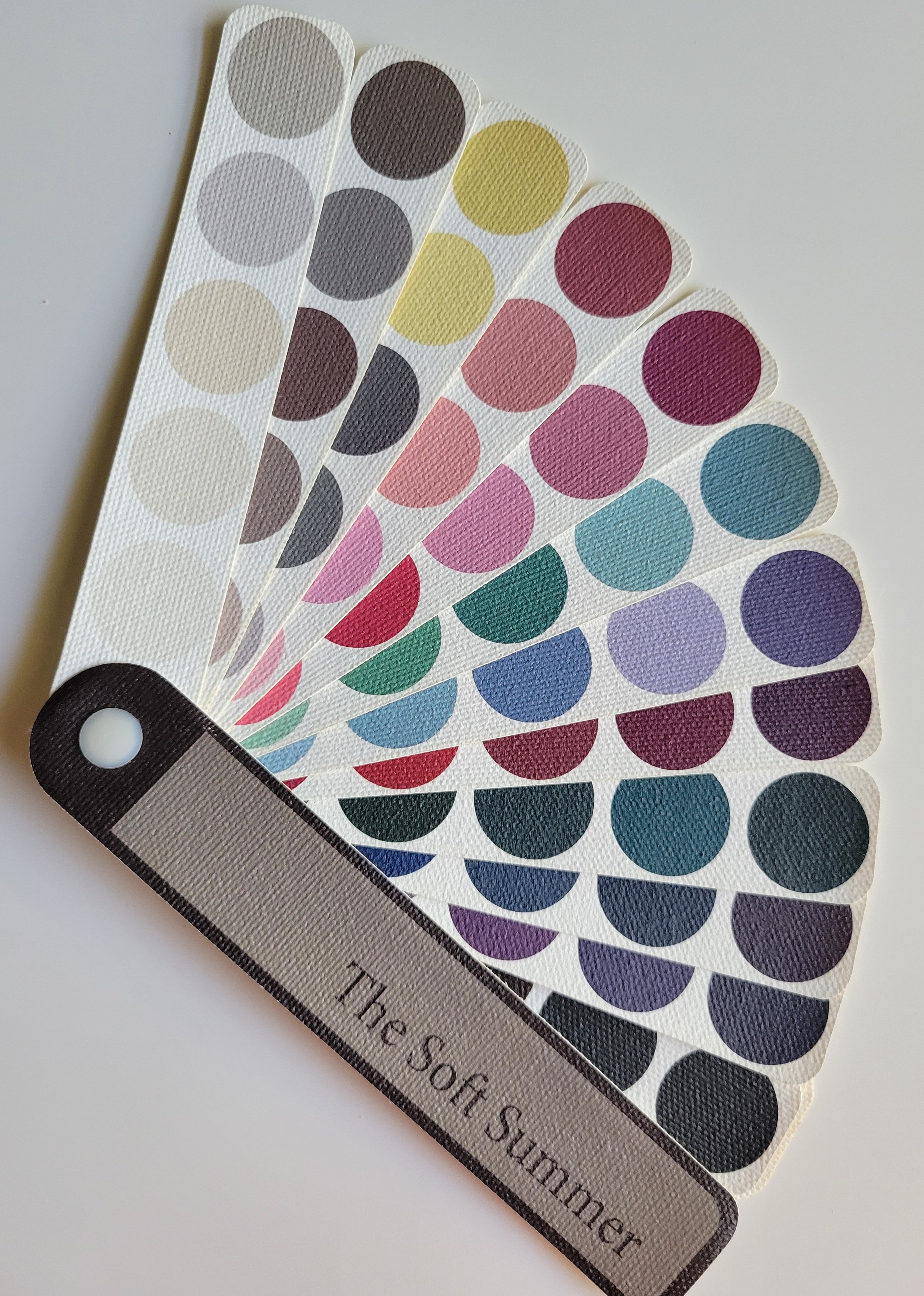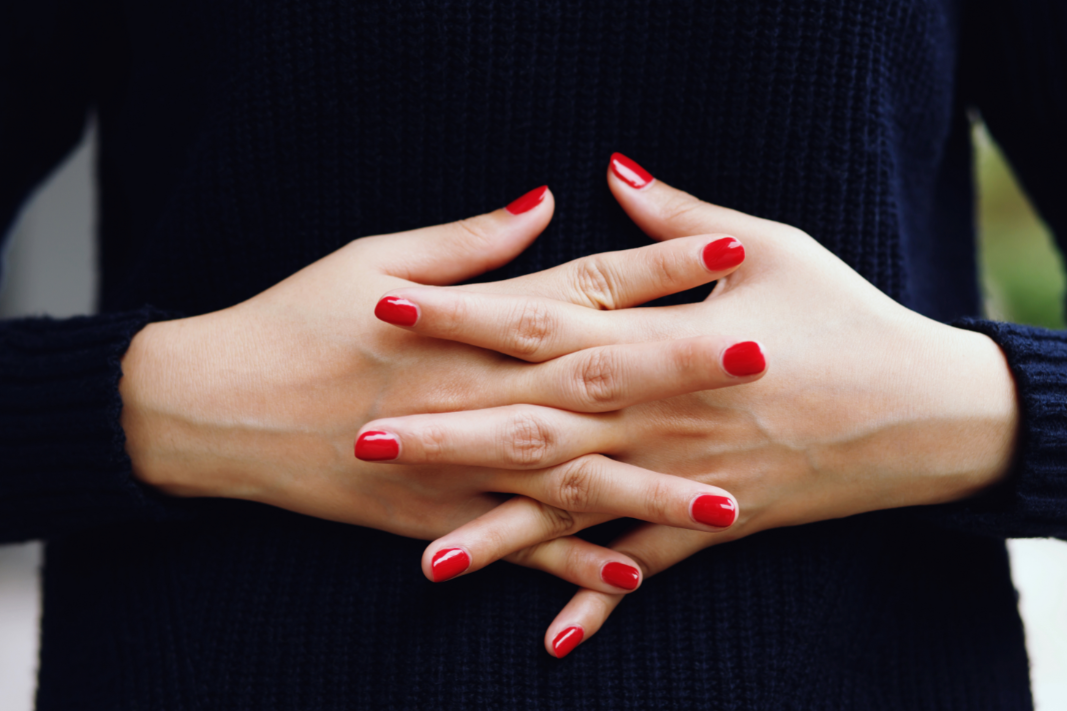This piece was originally posted in January 2015. Here it is again, very true to the original. I intend to revive this series for all twelve seasons as the mood strikes.
Every season suffers from stereotyping, some more than others. True Winter is the Ice Queen, Light Summer is Easter pastels, Dark Autumn is a smoldering tigress, and Soft Summer, well...if there's one season I'm always reluctant to determine a client, it's Soft Summer. Because no matter how luminous, how stunning, how sexy a Soft Summer looks in her colors, she almost invariably thinks, "I will be forced to wear dusty mauve - and only dusty mauve - for the rest of my life."
In this series, it is my intent to showcase lesser-seen sides of the 12 seasons: the sunny True Winter, the bold Light Spring, the ethereal Dark Autumn. And where better to start than Soft Summer?
Show any online group a fairly muted, boring garment and ask them to determine its season. Nine times out of ten, they'll answer "Soft Summer." In reality, that garment may fall into another season, or be too muted to truly flatter almost anyone. Soft Summer is the darkest of the Summer seasons, smoky and mysterious, but the colors are also quite vibrant.
However: a Soft Summer palette will look dusty when compared to a higher-chroma palette or garment. That's why it is so important to wear the colors that harmonize with your own coloring. Otherwise, you're the Soft Summer looking dusty in Bright Winter colors. Your clothing and makeup will walk in the room two days before you do. When you wear the colors that harmonize with your body, a mutual lifting-up occurs.
As an analyst, here's what goes through my mind when I think of Soft Summer:
Blackberry sherbet. Lamb's Ear. Crushed velvet. The evening sea rippling like dark ink against the shore. Lavender macarons. Charcoal tweed. Creamy white magnolia flowers, brushed with the barest whisper of pink. Gray wolves. Beaded ball gowns in shimmering taupe, raspberry, teal. Morning mist. Smoky tabbies. Men wearing navy linen. Sage. Dragonflies with iridescent wings. Slate. Celadon dishware. Venetian canals at twilight.
Sound boring? I didn't think so.
One of Soft Summer's biggest strengths is the unfettered potential for color combinations. Provided an outfit makes sense stylistically, you can cram as many Soft Summer colors into it as you like, without worrying that you'll look like there was an explosion in the Crayola Factory. This is a quality very particular to the Soft seasons. Other seasons can combine their colors well, of course, sometimes quite a few of them, but the Soft seasons are particularly enhanced by doing so.
Whether you've just been draped Soft Summer or you've been living in the season for a decade, here are some practical ways to infuse your appearance with some sultry appeal:
Back away from gray. Gray is easy for Summers to wear and can quickly overtake your closet. Take care to purchase other neutrals as well. Smoky navy, burgundy, and aubergine make lovely neutrals, just be careful not to move into too-saturated territory.
When you do purchase gray, look for unique color casts instead of the ubiquitous “sweatpants gray.” Grays that shift toward green, lavender, taupe, pink, or blue will add interest to your outfits.
Soft Summer is a Cool-Neutral season, but the key word is neutral. When selecting jewelry, consider rose gold and muted yellow gold in addition to silver-toned metals. Combining warm and cool tones in a single piece can be even better, as the warm and cool tones will play off of one another. This necklace is a beautiful example of a warmer stone with a cooler metal.
Remember to play with various types of contrast. While Soft Summer’s colors are muted, they are not one-note. Within your season, you will find contrast between warm and cool, light and dark, soft and vivid. This contrast will bring your makeup and outfits to life.
Don't live in monochrome. Combine those colors! A cold-weather look could include a smoky burgundy sweater, stony taupe pants, a navy crossbody, sage earrings, marsala nail polish, and rose velvet loafers. All of these soft sumptuous colors together create arresting synergy.
A Mini Makeup List:
Eyeshadow: Laura Mercier Plum Smoke, MAC Yogurt, MAC Quarry, Rom&nd Better Than Eyes palette in Dry Violet, Stila Shimmer & Glow Liquid Shadow in Cloud
Eyeliner: Pixi Rose Glow, Pixi Matte Mulberry, Urban Decay Smoke
Blush: Clinique Black Honey Pop, Clinique Cupid, Fenty Cheeks Out Cream Blush in Cool Berry, NARS Sin, Tarte Blushing Bride
Lips: Bobbi Brown Give a Fig, Bobbi Brown Italian Rose, Clinique Black Honey, Etude House Water Gel Tint in Red Bean Red, NYX Butter Gloss in Angel Food Cake
For more inspiration, check out my Soft Summer Pinterest board.


